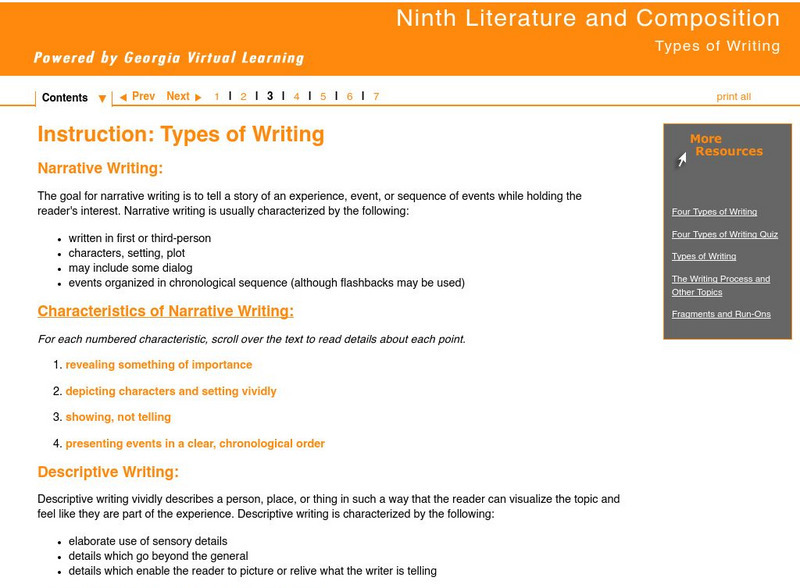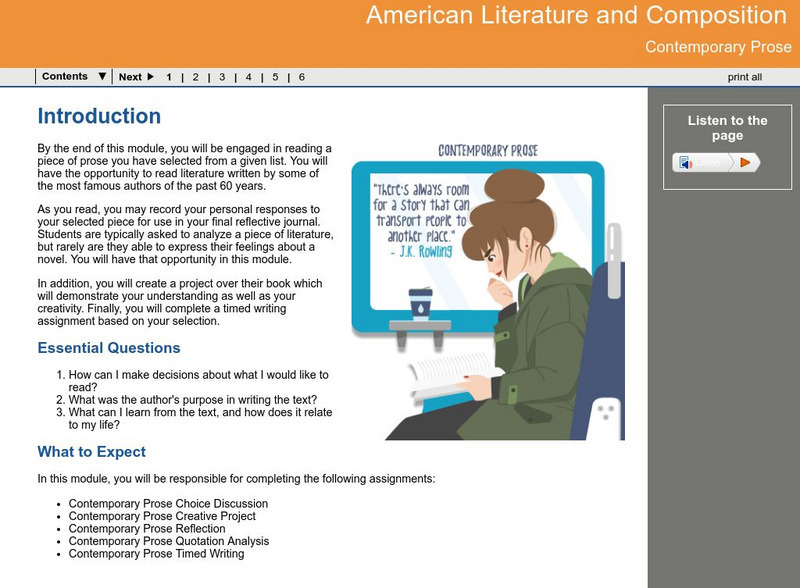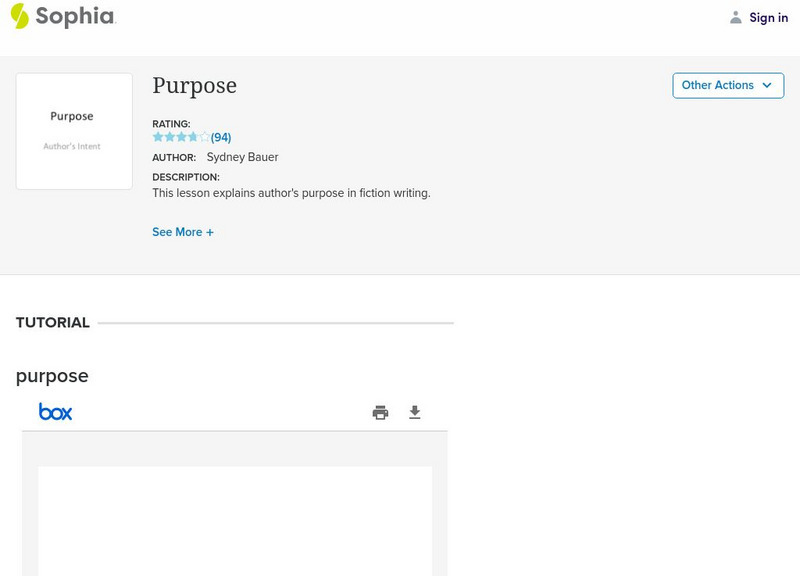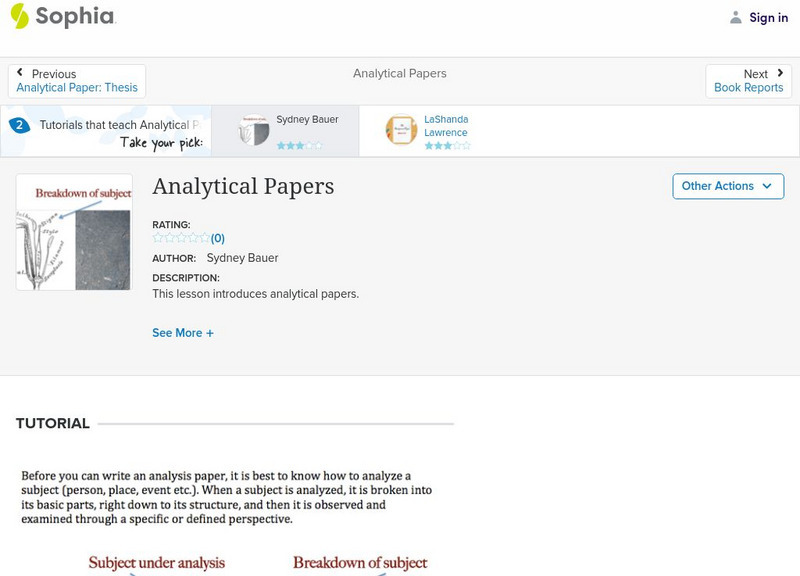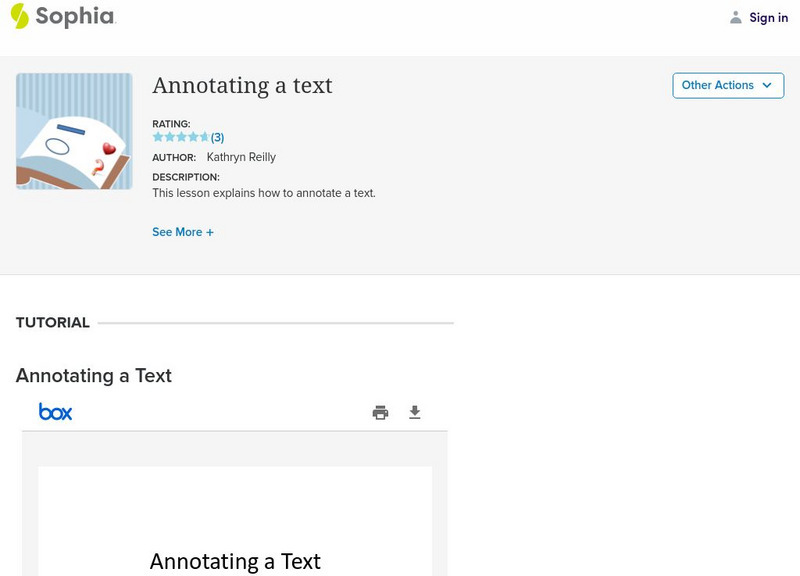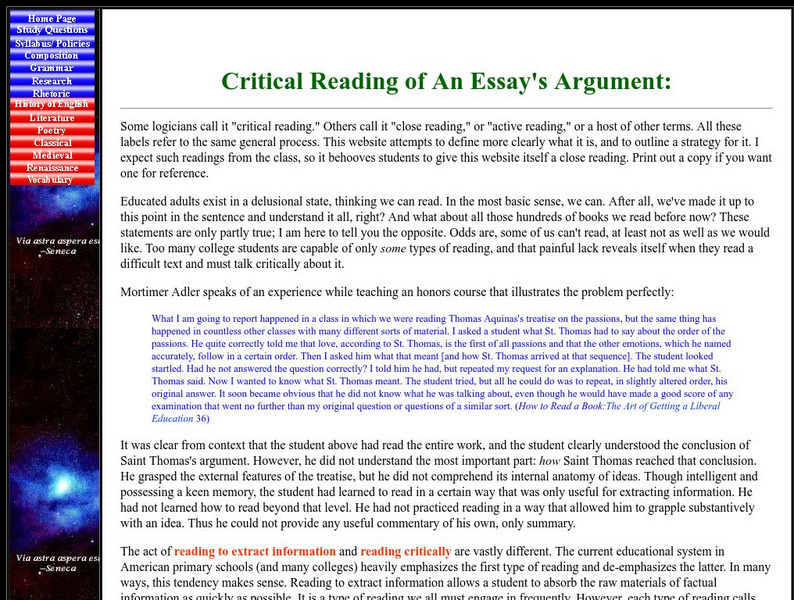Walters Art Museum
The Symbolism of Allegorical Art
Introduce learners to allegorical art with four bronze sculptures by Francesco Bertos. After modeling how to recognize bias and allegory in Bertos' Africa, class groups examine the other three sculptures in the series before creating...
English Enhanced Scope and Sequence
Identifying Persuasion in Media Literacy
As part of a study of media literacy, groups examine advertisements from Money, Fortune, The New Yorker, or Good Housekeeping and identify the types of rhetorical appeals used in the ads. After groups present their findings, the whole...
Southern Nevada Regional Professional Development Program
Common Core Reading Standards: Understanding Argument
What does your class know about logical fallacies? They can find out quite a bit and practice identifying logical fallacies if you follow the steps and use the resources provided here! After reviewing ethos, pathos, and logos, ask small...
Shmoop
ELA.CCSS.ELA-Literacy.RI.9-10.6
What does the author believe about his topic? Why did he write in the first place? Challenge your class to figure out the answers to these questions as they read through informational texts. The resource provides a breakdown of the...
Alabama Learning Exchange
Environmental Scrapbook and Podcast
High schoolers collect newspaper and magazine articles about the environment and construct a scrapbook using construction paper, glue, and scissors. To make it even more environmentally friendly, groups can create an online...
George Mason University
George Mason University: Writing Across the Curriculum: Teaching With Writing
Find a rationale, practices and strategies, and resources for incorporating writing in all areas of the curriculum. Learn how to write clear assignments and some methods to make grading of writing more efficient and effective....
Indiana University
Iu: Providing Students With a Purpose for Reading
Discussion of providing students with a purpose for reading from a college class site entitled "Advanced Study of the Teaching of Secondary School Reading." Along with discussion and background on the topic, some specific strategies are...
Virtual Salt
Virtual Salt: Introduction to Critical Thinking
An introduction to the concept of Critical Thinking examines the true definition and gives examples where it can be used as a constructive force.
Georgia Department of Education
Ga Virtual Learning: Ninth Literature and Composition
This is an introduction to a unit on writing in various genre including Nonfiction, Narrative, Literary Writing, Short Stories, and Poetry. Analysis of "The Odyssey", "To Kill a Mockingbird", "Romeo and Juliet". Click on the View links...
Georgia Department of Education
Ga Virtual Learning: Ninth Literature and Composition: Types of Writing: Review
This lesson is a review of the unit on types of writing including purpose, audience, tone, the writing process, the four types of writing, and sentence fragments and run-ons. A quiz is provided.
Georgia Department of Education
Ga Virtual Learning: American Literature and Composition: Contemporary Prose
This lesson is an introduction to a unit on postmodern prose; students will be reading a novel or play of their choosing from a list provided. They will be expected to reflect on the work through reflective journaling and a timed...
Georgia Department of Education
Ga Virtual Learning: Popular Culture: Expository Writing
This lesson focuses on expository writing including definitions, terms, sample expository essays, sequencing events into chonological order, and links to information about how to write expository essays.
Annenberg Foundation
Annenberg Learner: Conversations in Literature
A research based workshop by Judith Langer on bringing the joy of reading literature to your class. An excellent professional development resource, with eight videos on demand. Topics include Responding as Readers, Objectifying the Text,...
Sophia Learning
Sophia: Comparing and Contrasting Texts
This tutorial focuses on writing a comparison and contrast paper for both literary texts and informational texts. It offers a YouTube video about writing a synthesis paper using either a point by point or a source by source arrangement....
Sophia Learning
Sophia: Editing Techniques: Writing a Reverse Outline
This slideshow lesson focuses on writing a reverse outline as a post writing strategy for assessing your paper for weak or missing aspects. It explains how to create the outline using a rubric if available and provides a skeletal example...
Sophia Learning
Sophia: Purpose
This slideshow lesson focuses on purpose; it defines purpose and lists the two main purposes of all writing: to educate (didactic text meaning to inform and instruct) or to entertain (imaginative text). The purpose could also be art for...
Sophia Learning
Sophia: Selecting Topics for Literary Analysis
A series of resources designed to teach students how to write a literary analysis. The first is a screencast [6 mins] that focuses on defining and introducing the parts of a literary analysis. The second is a slide show with seven slides...
Sophia Learning
Sophia: Analytical Papers
This lesson focuses on analytical papers; it explains how to analyze a subject and the goal of analytical papers. They must include a defined or specific perspective from which to evaluate, an evaluation, and the breakdown of the...
Sophia Learning
Sophia: Annotating Text
This slideshow focuses on the reading strategy, annotating text. It defines the term and purpose, lists types of annotation, explains what to annotate, and suggests how readers develop their own method.
Yale University
Yale University: Open Yale Courses: Introduction to Theory of Literature
Access any one of twenty-five lectures, in audio, video, or text format, from a university-level course in literary analysis and critical literary theories. Considers postmodernism, New Criticism, feminism, deconstructionism, and an...
Annenberg Foundation
Annenberg Learner: Arbiter
Determine your standards (logic, creativity, structure, etc.) when assessing student writing. Evaluate three essays using an analytic or holistic rubric and see how your standards compare with your peers.
Annenberg Foundation
Annenberg Learner: Interactive Forum
Read two poems and follow the prompts to interpret them using four approaches: reader response, inquiry, cultural studies, and critical pedagogy. Use the prompts to guide personal reflection, launch a lesson with students, or join an...
Other
Carson Newman College: Critical Reading of an Essay's Argument
Extensive examination of what it means to critically read an argument. This process is sometimes called "critical reading," or "close reading," or "active reading." First the differences between reading to extract information and reading...
Georgia Department of Education
Ga Virtual Learning: "How to Write a Literary Analysis Essay" [Pdf]
This is a nine-page PDF entitled "How to Write a Literary Analysis Essay" which explains in detail the parts of a literary analysis and how to write them.







